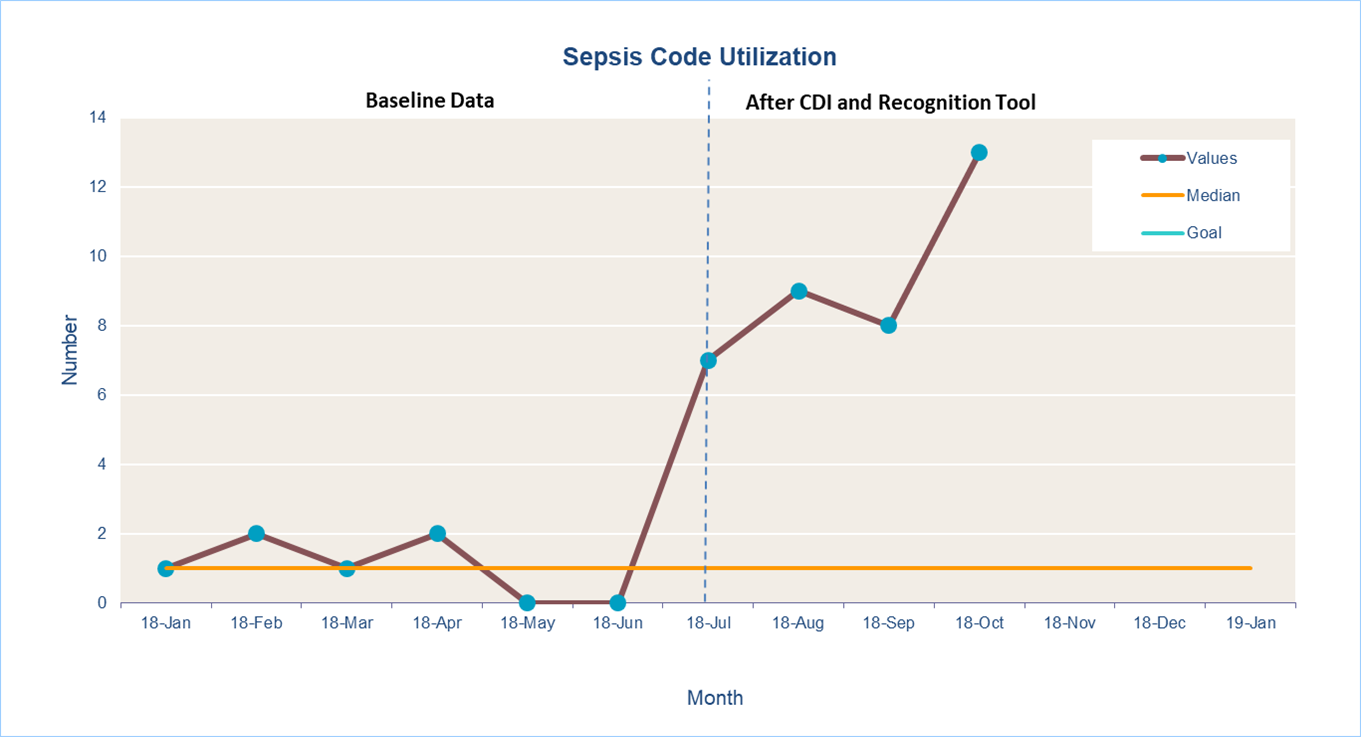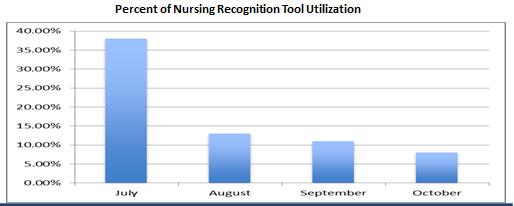Background: The Children’s Hospital Association (CHA) Sepsis Collaborative recognizes pediatric sepsis as a significant cause of mortality and nationwide efforts are being developed to improve sepsis recognition. A critical component to decreasing sepsis mortality is early identification of sepsis so that interventions are initiated quickly. At Johns Hopkins All Children’s Hospital, there is a significant gap in the inpatient wards service’s clinical documentation to identify patients that meet criteria for sepsis. Further, there is no recognition tool to identify patients with evolving sepsis on the inpatient ward service. Baseline data from January to June 2018 at our institution shows sepsis code utilization of no more than 2 cases per month on the inpatient wards service.
Purpose: The objective of this initiative was to utilize clinical documentation improvement (CDI) education and implement a nursing recognition tool to enhance early identification of pediatric sepsis on the inpatient wards service. The goal was to increase the hospitalist service’s code utilization of sepsis by greater than 50% from July 2018 to January 2019 in cases meeting Goldstein’s clinical criteria for sepsis.
Description: The Pediatric Hospitalist Division devised a dual approach to improve clinical documentation for sepsis through education and recognition. For education, Goldstein’s criteria: Sepsis, Severe Sepsis, and Septic Shock were clearly defined, posted in work rooms, and taught to all providers on the inpatient service. For recognition, nurses were given a recognition tool that was developed by inpatient providers to alert physicians of patients with concerns for sepsis. Resident and Hospitalist education was reinforced at designated education lectures and in nighttime curriculum. Nursing input on the implementation of the recognition tool was monitored at monthly comprehensive unit-based safety program (CUSP) team meetings and daily huddles.
Conclusions: Implementation of CDI education to the physician staff and utilization of a nursing sepsis recognition tool more than tripled the sepsis code utilization for inpatients meeting Goldstein’s criteria for sepsis during our time interval. A multidisciplinary approach for education and recognition can lead to enhanced identification of sepsis. This has profound implications in our institution’s ability to improve sepsis outcome measures if we are better able to identify this process so that we can treat it aggressively.


